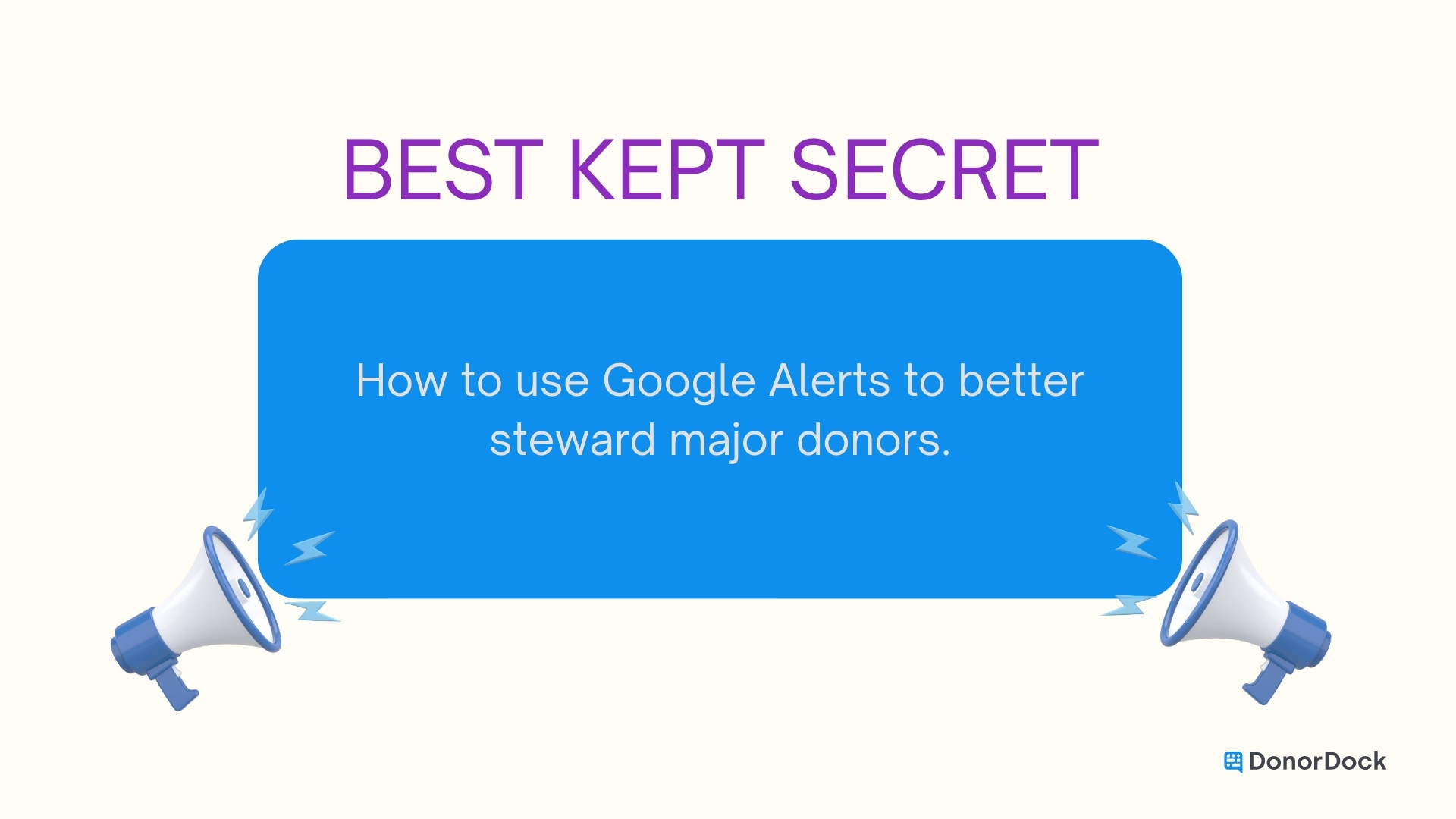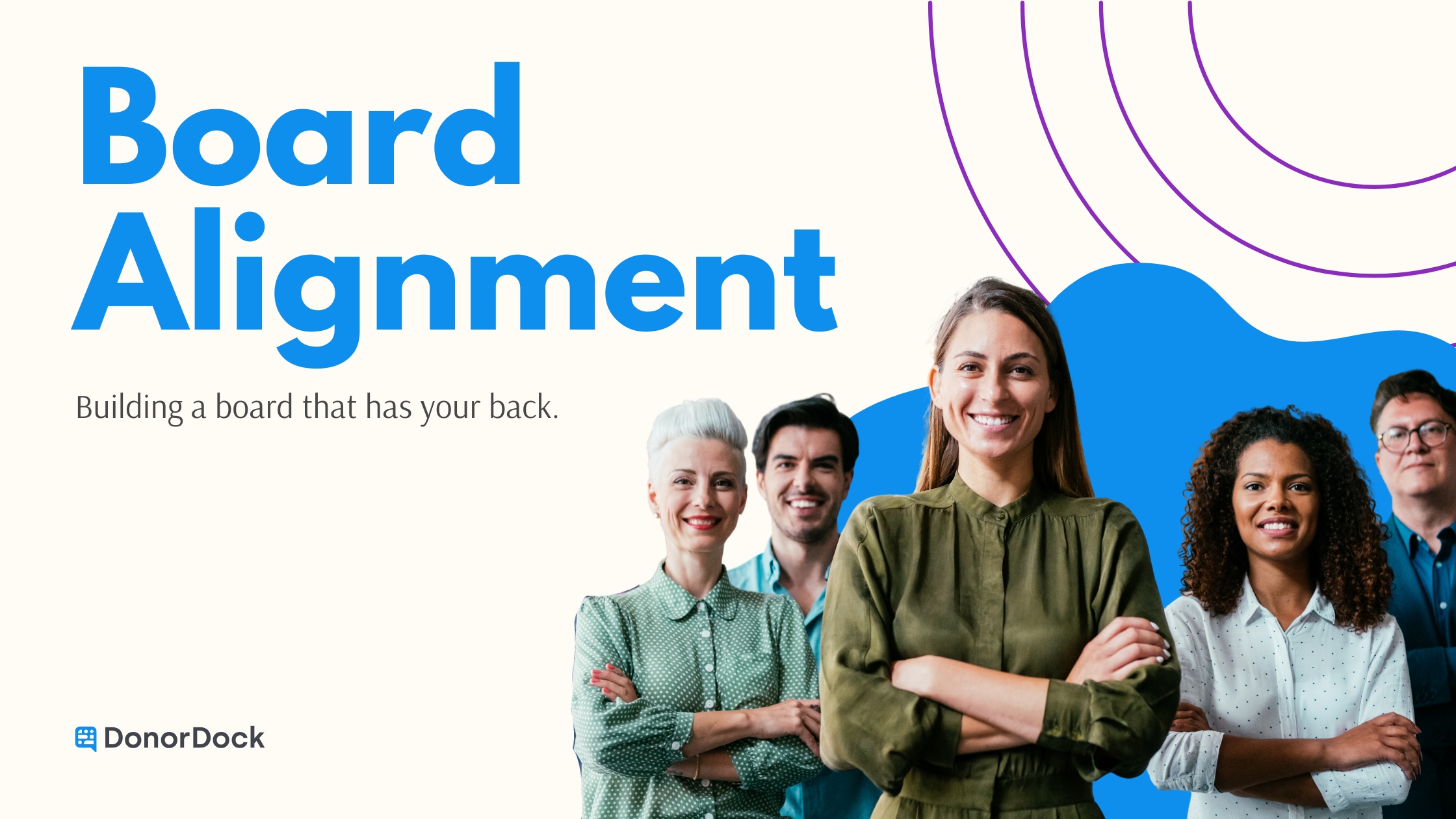Feeling lost in the sea of grant funding? Navigating the world of grant funding can feel like sailing in uncharted waters. However, with the right tools and strategies, you can position your nonprofit to secure the life-changing funding you need.
In this guide, we'll demystify grants, show you where to find the right ones for your nonprofit, and give you insights on how to become grant-ready.
We will dive into strategic tips to identify potential funders and how to effectively engage them.
By the end, you'll be equipped with practical steps for crafting compelling grant proposals and demonstrating your program's impact.
Buckle in and get ready to power up your nonprofit's grant readiness!
Table of Contents:
- What are grants?
- Where to find grants
- Writing proposals that resonate
- Demonstrating impact through reporting
- Conclusion
- FAQs
What are grants?
Grants are funds provided by governments, organizations, or institutions to individuals or groups for specific purposes. Unlike loans, grants do not need to be repaid, making them a great option for nonprofit funding. Grants can be awarded for various purposes such as research, education, community development, arts and culture, environmental conservation, and social welfare programs.
Recipients of grants are typically required to meet certain eligibility criteria and may need to fulfill specific obligations outlined by the grant provider. Grants play a crucial role in fostering innovation, addressing societal needs, and promoting positive change in various fields.
Where to find the right grants for your nonprofit?

Finding the right grants can feel like searching for a needle in a haystack. To find the best grants for your nonprofit, you need to understand your mission and the objectives different grant funders want to achieve.
Identifying compatible funders
Before diving into your search, spend some time thinking about the different programs of your nonprofit. Consider how the different objectives of your program could appeal to different types of funders.
Let's say an organization that deals with homelessness, deals with veterans, and job readiness. As opposed to only applying for grants that fund the entire organization. You can also look for funding for job readiness, for funds that are geared towards veterans, and those that may be for those who are housing insecure or homelessness. So you're able to grow your prospects of funders, as opposed to just looking for funds to fund the entire organization.
-Jennifer Yarbrough on Beyond the Donation Ep 28
This sage advice from the Grant Guru, Jennifer Yarbrough, underscores the strategic advantage of taking a segmented approach during your grant search. Different aspects of your nonprofit's mission can attract different types of funders. Using fund accounting can help you identify those different parts of your program. When you use fund accounting, you set yourself up well to demonstrate transparency and accountability to different funders. As such, this practice can boost your chances of securing grants.
Having laid the groundwork with strategic segmentation and fund accounting, you are now better positioned to use another valuable tool in your grant search - Online Grant Databases.
Utilizing Online Grant Databases
Finding relevant grants requires some digging, but thanks to online databases you can access thousands of funding opportunities all in one place. Online Grant Databases offer a centralized location where you can discover opportunities that align perfectly with your nonprofit's mission and needs.
Here are three great databases to start with:
One of the most significant advantages of these databases is their ability to filter searches based on criteria such as focus area, geographic location, or funding type. You’re able to skim past options that don't match your criteria and find funders who align with your nonprofit’s goals.
Leveraging relationships
Fostering strong connections with grant funders goes beyond the application. It's about creating long-lasting relationships that open new opportunities. To foster these relationships connect regularly with grant funders through nurture emails and updates. Adding a funder on LinkedIn is also a great way to stay up-to-date with their priorities.
You’re more likely to receive a grant from an organization that you’ve already built a relationship with. But, you’re also more likely to get grants from other organizations if you’ve proven yourself to be faithful with previous grant funds. And more than that, a funder you have a relationship with is more likely to connect you to other individuals and organizations who have grants that align with your work.
Here are some helpful tips on how you can catch the interest of potential supporters. Remember, every interaction counts towards building a network of supporters who believe in your cause as much as you do.
Writing grant proposals that resonate
A proposal is more than a plea for funds; it should be a call to unite together to make an impactful change.
Research is key
Before you even put pen to paper, have a good understanding of the funder's vision, values, and success criteria. Understand their thrust areas (what the funder is most passionate about), past beneficiaries, and feedback loops. Grant funders have specific objectives that they want to see met. It doesn’t matter how noble your mission is if you don’t plan to meet their specific objectives. That’s why it’s vital to echo your nonprofit's purpose in a way that aligns with the funder’s objectives. Show them what you plan to do with the grant and how it propels their goal forward.
Combine story and statistics
Facts tell, stories sell.
Once you start your writing process, remember that facts tell, but stories sell. Share persuasive narratives that underscore the problem your organization is solving. Incorporate statistics and facts to underscore the severity of the problem, then narrate how your work has made a difference.
In writing, efficacy is key. Clearly articulate your organization's project goals, objectives, action steps, the expected results, and how they align with the funder.
Do not forget to include a logical, transparent, and well-crafted budget that aligns with your proposed activities. Show how potential grant funds will be directed and used appropriately and responsibly. Demonstrate financial stability and culpability, showing that every dollar granted will be put to the utmost use.
Emphasize Sustainability
Finally, express the sustainability of your program. Show the funder how their investment won't just have immediate effect but will provide long-term solutions.
Grantmakers want to invest in something that will continue to have an impact long after their funding has been spent.
By appealing to both the head (with clear objectives and data) and the heart (with storytelling and passion), you can craft a proposal that deeply resonates.
Everyone loves to be part of a winning story, and it's your job to show funders they could be a character in that positive narrative by supporting your cause.
Save time with grant writing assistance
In the busy world of nonprofits, every second counts. That's where artificial intelligence becomes an ally. While the human touch will always be necessary for revising and editing, AI helps break writer’s block and gives a great starting point.
With AI, you can create an outline, ask for statistics to support your proposal, and create compelling content. Steward, an AI assistant specifically crafted for nonprofits, streamlines your grant writing process like never before.
To get started enter this prompt:
“Help me write a grant proposal for [name or type of grant]. What details do you need from me?”

How to demonstrate impact and results
Set clear program objectives
Turning a desire to help into actual, measurable change might seem daunting. But don't worry, setting clear goals and carefully planning your program doesn’t have to be overwhelming. It’s not just about saying you want to help people; it’s about defining how many people you plan to reach and what specific changes you expect as a result of your program.
A good starting point is to ask yourself, “What does success look like for this project?” Is it feeding 100 families in a month or teaching 50 students coding skills? Jot down your objectives, no matter what they are.
Use this SMART Goal Template to help define goals that are measurable and specific.

When you write your objectives down clearly, you’ll be able to better assess if they actually line up with the grantmaker. Then, compare the two and refine your objectives if needed. Crafting objectives that mesh well with the grant stipulations shows funders that each penny will be allocated meaningfully. They'll guide your actions and help show funders exactly where their support goes.
Effective reporting practices
Once you've kicked off your projects based on well-defined objectives, the next step is showing off that hard-earned progress through effective reporting practices.
Yes, reporting feels like just another hoop to jump through. You’re already juggling a lot in carrying out the activities, but grantmakers expect nonprofits to focus on measuring impact and results not just activities undertaken.

Make sure you stay on top of reporting and not save it until the end. It can be very difficult to remember all that happened throughout the year. Fund accounting is a great way to track your grant-specific spending to ensure that all money is used appropriately.
Reports should go beyond numbers; they must tell a story about how those numbers have translated into real-world change for individuals or communities served by the nonprofit.
Incorporating feedback from participants or stakeholders can also add depth to reports because stories resonate more with current and potential funders than raw statistics alone could ever do.
Conclusion
So, we've dived deep into how to get your nonprofit grant ready.
Keep in mind that grants are a great opportunity to fuel your nonprofit’s growth, but aligning your work with the funders' goals is key.
Building relationships matters. By unlocking doors and crafting chances beyond just the initial financial support, it lays the groundwork for a broader scope of possibilities.
Showcase impact over activities. Funders want to see results, real change sparked by their support.
In all this, never lose sight of why you started: to make a difference. Keep your enthusiasm glowing in every form you fill out and each conversation you engage in.
This journey isn't easy but armed with these insights; you're better prepared than ever before.
Using a tool to manage grants and funds will help you stay organized and provide the statistics needed for reporting easily.
DonorDock, a donor management platform built for small nonprofits allows you to designate incoming funds and more. Try it for free!
Grant FAQs
How do I write a grant for a nonprofit organization?
Dive deep into the funder's interests. Tailor your proposal to echo their goals while spotlighting your nonprofit's unique value proposition. Feeling stuck on where to begin? Use a tool like Steward AI to help you get started.
How do I ask for grant funding?
Contact funders confidently. Show them how your nonprofit’s specific programs will directly tie into their desired objectives. Use a combination of storytelling, statistics, and a proposed budget to show impact, transparency, and accountability.
How long does it take to prepare a grant?
The timeline varies but aim for at least six weeks out. This gives you room to research, draft, revise, and submit without rushing.












